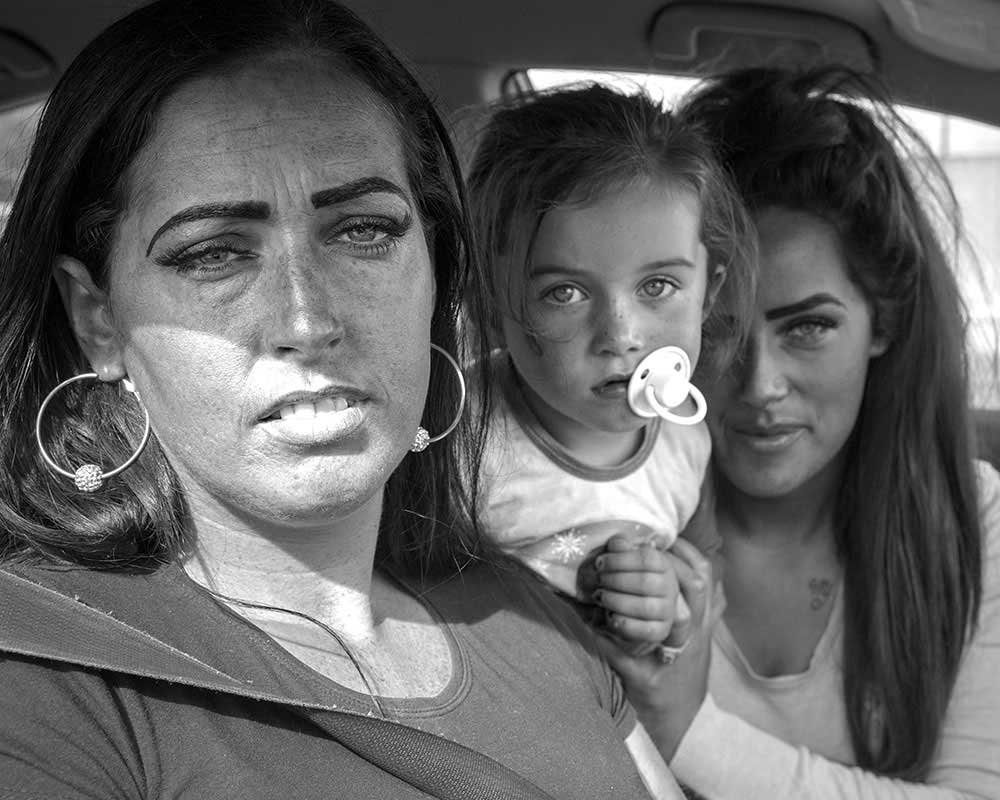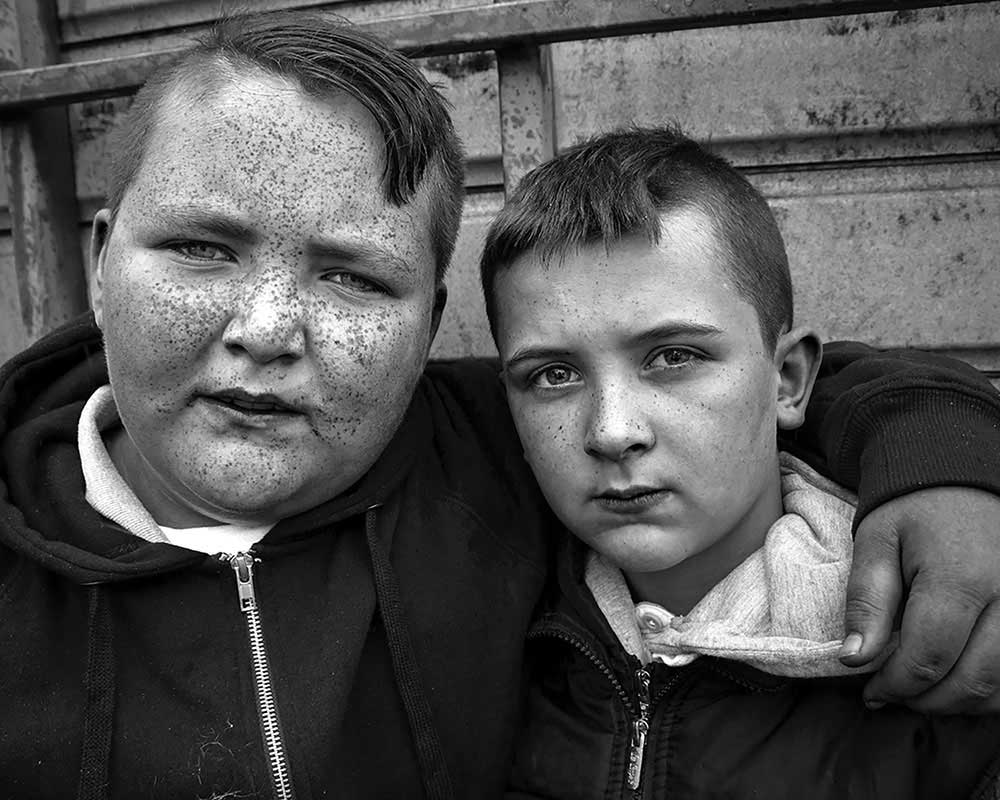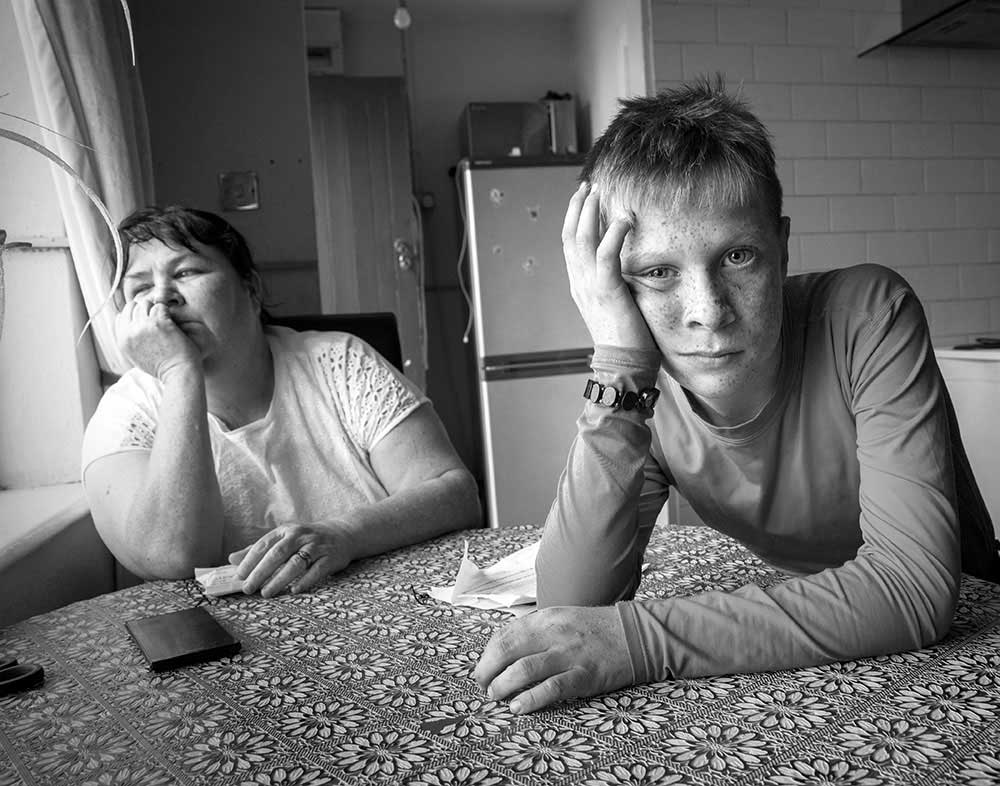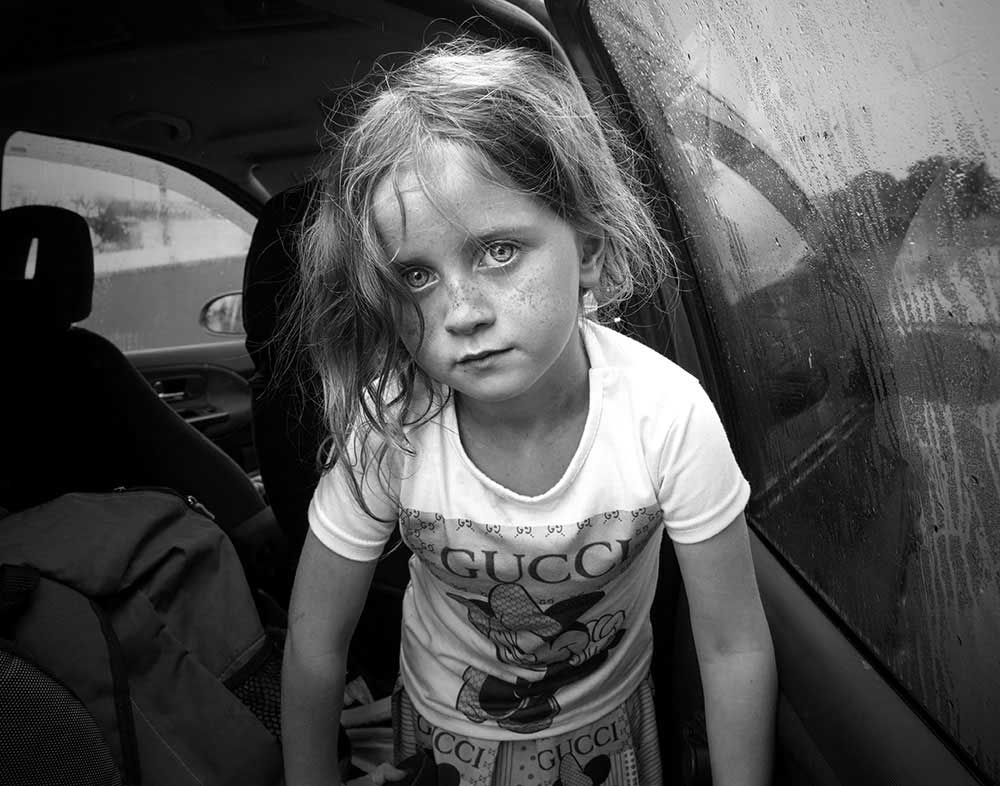Virginia native Rebecca Moseman received her Bachelor of Fine Arts from Virginia Polytechnic Institute in 1997 and her Master of Fine Arts from Rochester Institute of Technology in 2001.
She has worked in academia, private industry, and Government as an instructor, consultant, and graphic designer and does freelance work in photography and publishing. Her work has been exhibited throughout the US and abroad and has been selected on the cover of Black+White Magazine, and featured within Black & White Magazine, GUP, Resource, Dodho, and SHOTS Magazine. Rebecca Moseman was published in our print edition #10. [Official Website] [Print Edition][Digital Edition]
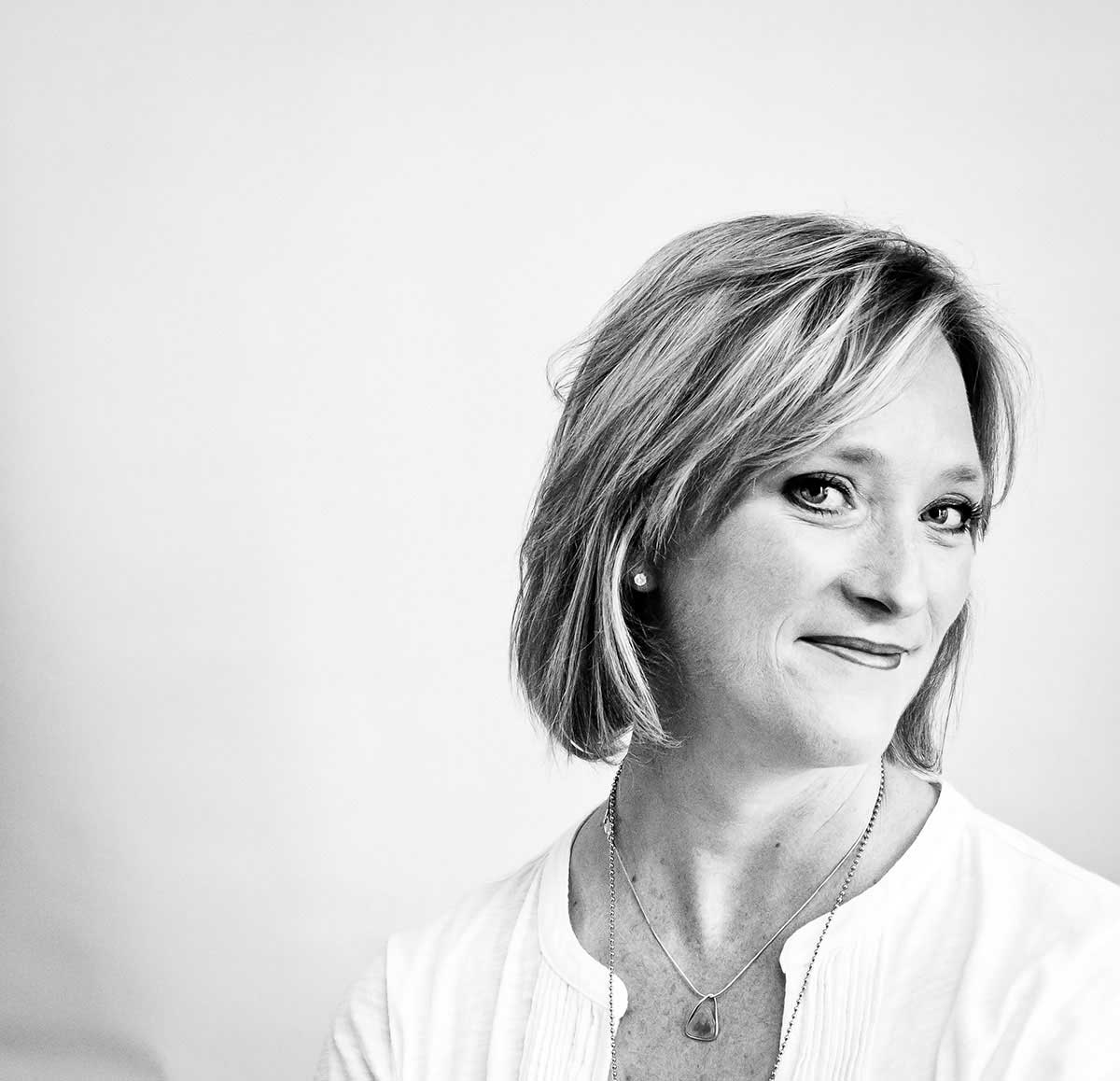
Throughout your personal investigation of this project were you ever invited to discuss what type of traditions, culture and activities these Irish travellers were involved in?
The travelers are very proud of their culture and traditions, especially their nomadic roots. They have a long shared history including their own language (known as Cant or Gammon), customs and traditions that make them an exclusive group. The travelers I met were more than willing to talk about their traditions and different ways of life from the “settled” Irish (or general Irish population) – but their unique traditions and values were even more evident to me in what I observed with my eyes and my camera. The way I saw them live and interact was a display of their distinct way of life. For example, the travelers don’t live nomadic lives anymore the way their ancestors did, but many of them still prefer to live as if they could be wanderers if they chose to be. In March 2017 the Irish Government identified the Travelers as their own ethnic group, and therefore started to provide separate living areas for them to reside in small groups. These areas are referred to as Halting Sites and they provide Travel- er families with housing, sanitation, electricity and running water. Most of these halting sites are located on the outskirts of towns, and in many cases in less desirable locations (for ex- ample the Carrowbrowne halting site sits alongside a waste management facility). Many of the travelers however still prefer to live within their caravans as they have for years. Some travelers have been on halting site waiting lists for many years (some as long as 10 years), while other Travelers reject the idea of Government sponsored, heavily patrolled living areas completely, and prefer to live as their ancestors had alongside roads. These areas are referred to as Illegal Encampments. There are many complaints from the Irish population about the Travelers living in such areas as they are not only an eyesore but also are unsani- tary and dangerous. I visited many very poor families that lived in these illegal encampments and saw firsthand the dirty environments in which they lived.
The Travelers are also proud of their horse trading traditions and continue to participate in horse buying and trading at the various horse fairs that go on throughout the year. The women in the Traveler community are also traditionally married off young and encouraged to have many children. Arranged marriages aren’t as common today as they had been, and girls and boys meet each other through friends, family connections or at the horse fairs. There are still strict rules for girls from the age of puberty until they are marriage however, and many find the rules too strict and confining. Some girls express their desire to “marry early to get freedoms”.
One element which I like when viewing your images from this collection is the duality between the adults and the children. I not only see the children as being more mischievous and creative in their expressions but also adopting a level of seriousness behind this. Specifically, with images like the freckled boy whose arm is around his friend. Are the images of children in this collection a precursor to their roles as adults and in the gipsy community?
Although the Travelers have a very long and proud history, but some of this history is the very reason they have challenges in today’s times, and you see reflected within the children. Family life is very important to the Travelers. They not only have a strong sense of family, but very specific gender roles. The men have always been the providers of the family while the women have been the caretakers – staying home to cook, clean, and watch over the chil- dren. But due to the unsavory reputations of the Travelers, and some criminal history of cheating, stealing and scheming it is not uncommon for Traveler men to have a very hard time getting work. Unemployment is at 85% and it is not uncommon for the Traveler boys and girls to drop out of school early. 13% of Traveler children complete second-level educa- tion compared to 95% of the settled Irish. Men die 15 years earlier than other men, women die 11 years earlier. The suicide rate is 6x higher than the general population and 7x higher among the young traveler men.
As a photographer, I could see the hard life and the discrimination within the faces of the Traveler children. I tried to capture not only their innate youth and childlike gestures and activities, but also the emotion and hardship they’ve had to live and continue to live every- day. Yet, I found the children to be happy, and content with their way of life. It’s all they have known. In talking with a few of the girls I photographed, they admitted they didn’t like school because they felt isolated and different than the other girls, and that “the other girls aren’t nice because they know we’re travelers”. As the children get older it is harder for them to act as normal teenagers in general society because often times establishments such as pubs and discos won’t let them in due to being Travelers.
There is also a toughness to the children I encountered and photographed. They experience hardship and boredom from an early age. The boys were very mischievous and often times misbehaved while their parents looked on. Most of them live a rough life physically and emotionally and I tried to capture that element of their personalities in my photographs.
I find these conflicting attitudes and emotions portray an accurate representation of they are feeling in the moment I make my photograph, and are therefore more genuine, making my photograph of them more interesting. I’m not interested in cute, predictable or posed photographs – and these are not cute, predictable people.
They have a hard life ahead of them, which many of them foresee and feel little control over. The boys typically take over their fathers professions, and the girls are encouraged to marry early and have many children. Breaking free from the Traveler clan is highly discouraged and marriages outside of the community is rarely encountered. The children are trapped in a society and world based on long and outdated history, but outside of their control.
Moving on to the photographs of women in this collection, again they all share common features. Could you possibly elaborate on the idea behind ‘looks’ and why is it so important for women in this community to always be well presented, well dressed, wear lots of make-up and appear as objects to be desired?
Traditional gender roles are common within the Traveler community. It is expected and en- couraged for Traveler girls to marry young and have many children. In fact, the girls are heavily chaperoned from the age of puberty until marriage and Traveler rules about dating and associating with boys is very strict. Many girls feel this is too confining and try to “marry early to get freedoms”. Traveler girls are not encouraged to continue their educations bey- ond secondary school, nor find jobs outside of the home or Traveler community – therefore the emphasis on marriage and children is strong. Teenage girls start to attract future hus- bands earlier perhaps then settled Irish girls of the same age. Girls put a lot of effort into their looks, sometimes wearing suggestive clothing (which goes against their traditionally conservative ideas in regard to relationships outside of marriage). The younger girls often mimic what they see the older girls doing, and often times I witnessed girls as young as 4 or 5 dressed up in provocative clothing, wearing make up and fake nails.
The idea of Irish travellers as segregated, reclusive and sometimes outlandish in behaviour are characteristics presented in films like Guy Ritchie’s “Snatch”. Where the notion of a fighting spirit and toughness are desired and expected within communities. Is this something that you noticed or were exposed to while pho- tographing this community or is this idea of the roughness of the Irish travellers a misconception that you are attempting to highlight with these images.
I found there is definitely a fighting spirit and toughness in behavior among the Travelers, especially with the men. The older Travelers didn’t harness as much aggression, but the Traveler teenagers and young men could be very standoffish. In some cases, they resented being looked at for being different – maybe resented the way in which others saw them. But others seemed to want to live up to the reputations they had acquired as if it was expected of them to be obnoxious or different. As a woman photographer, I was discouraged from ever going into a caravan alone with a male Traveler – nor did I ever leave my belongings unattended in their presence. But just like any other young man, they tried to take advantage of my interest in them and asked for hugs and kisses, asked if I was married or had a boy- friend, etc.. I’m not sure if this is particularly Traveler behavior or just teenage boy behavior (especially in a group).
There was (in my opinion and experience) a fair share of mischief that seemed to go on and general misbehavior. Some of this behavior and aggression was due to a lot of drinking, and the drinking went on because of the lack of employment, boredom and isolation these men face. As I stated earlier, they experience hardship and boredom from an early age, and I saw a lot of pent up energy and anger always there just below the surface. Often times the travelers (especially the men) were suspicious of newcomers coming to the halting sites or roadside encampments. They don’t get a lot of outside visitors and they don’t want trouble. Often the men would not want me to take their photographs. Some of them didn’t want their horses photographed. Whether this was because of horse-stealing or just privacy concerns I never knew. Some traveler men also had to disguise their Traveler identities in order to find jobs – although they were as qualified to do the job as anybody else, if they were known Travelers often times they wouldn’t get hired. This is why it’s common for the men to travel outside the country to work jobs and send back money to the family. Sometimes they can be gone for months at a time.
I did find many of the Travelers very nice and polite – especially the women who frequently invited me in for tea. They were always curious about where I came from, whether I was married and children, and if I liked Ireland.
You mentioned that your opportunity to photograph these travelers was under the supervision of a fellow photographer who provided you access… Could you possibly tell us a little bit about how you got to know this photographer, and how you worked with him in relation to the portraits in this collection, i.e. your approach and methodology to photographing subjects?
I first met Joseph, the fellow photographer back in 2017 when I had heard of the Travelers and saw some of his photographs. Joseph has been associating with the Travelers for many years and many consider him their friend and advocate. I had discovered my own interest in making portraits of people and I found his work and the Travelers in general to be very inter- esting so I reached out to him and scheduled my first trip to Ireland in the fall of 2017. I scheduled my trip to coincide with the Ballinasloe Horse fair which is the oldest and largest horse fair in Ireland. The travelers have been attending the Ballinasloe Horse fair for many many years to trade and buy horses and goods. There are a lot of traditions that still go on at the fair including the girls getting dressed up and parading around the streets during the day and night.
My approach to photographing the Travelers has been the same in my approach to any por- traits I create. I try to find a connection with my subject, and then photograph the person I find within instead of the person they display to me on the outside. For example, most of the girls I photograph pose for the camera the way they see American models pose. I try hard to to eliminate this outside posturing before I can successfully take a portrait of who they really are, and show their vulnerability. Sometimes this is easy, and sometimes very difficult, and often times I have only a few minutes with them before they wander off with their friends. Joseph and other photographers have their own style when photographing the Travelers, but I find that we all bring our own unique style and underlying intentions in making our photo- graphs. Anytime my subjects allow me to take their photograph, they are surrendering them- selves (opening themselves) to me, even if just for a brief moment. Sometimes what they display is anger, aggression, vulnerability, awkwardness, confidence or lack of confidence. But it’s the moment they’ve agreed (non-verbally) to give me, and these conflicting emotions have led to some of my best portraits.
The transition between childhood and adulthood is something which I feel this project briefly touches on. Were you ever able to discuss the traditions or ceremonies which take place when a child has transitioned into adulthood, and how important is this to the traveller’s culture?
This transition I found happens rather quickly. This may be because of the tendency for boys to drop out of school at an early age and try to find jobs earlier than “settled” peers, and/or the emphasis for girls to attract husbands and have many children at a young age. The girls seem to be less innocent at a young age, and the boys less carefree – I think this has to do with the hardships they get to know so young. This transition or conflict of adulthood and childhood is what I find interesting to photograph.
The largest and most important ceremony the Travelers probably experience before their wedding day is their first communion. Although they still have the sacrament of Confirmation to go through, their First Communion is seen as almost a pre-wedding ceremony in its dress and orchestration. As is typical within the Traveler community, the boys, and girls in particu- lar, get very dressed up – more so than their peers, which accentuates the differences bet- ween them – to commune with their God. It’s a rite of passage for most Travelers and the little girls look like little brides in their dresses. Marriage is the final transition into adulthood for the Travelers, especially the females since they are so restricted up until they take their vows.
I’d like to finalize this interview by asking about any future projects in the works and what we can expect to see photographically in the future?
I plan on continuing to make portraits of interesting people- I have a few project “seeds” planted and hope to develop one of these seeds into another project series that will show a different side of people to people. I also have been working on developing a story-telling narrative based on old photographs, diary and journal entries, and personal belongings of a now deceased woman’s trip to and through Alaska. We’ll see how it works out!!
Francesco Scalici
A recent MA graduate from the University of Lincoln, Francesco has now focused on landscape photography as the basis of his photographic platform. An author for DODHO magazine, Francesco’s interest in documentary photography has turned to writing and has had various articles, interviews and book reviews published on platforms such as: ‘All About Photo.com’, ‘Float Magazine’ and ‘Life Framer Magazine’. Currently on a photographic internship, Francesco has most recently been involved in the making of a short film titled: ‘No One Else’, directed by Pedro Sanchez Román and produced my Martin Nuza.



